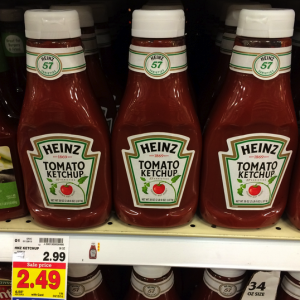At an auction in 2007 Andreas Gursky turned 99 cents into $3.34 million.
Well, sort of. Perhaps it’d be more accurate to say he turned 99 Cent II Diptychon, a photograph depicting an interior of a supermarket, into a few million. At the time this was the most expensive photograph in the world.
Even more amazing is that this was the third print of the same image that had sold for millions. Two others sold in 2006, one for $2.25 million and another for $2.48 million. Altogether the images earned $8.07 million. Not bad for a snapshot of a grocery store.
Gursky digitally altered the image to reduce perspective, forcing the viewer to see a familiar sight from a different perspective. Mostly what we notice in the picture is colors. In focusing on that aspect, though, the image draws our attention away from something beautiful and complex that we often take for granted. I’m neither an artist nor an art critic but I want to draw your eye to that feature.
Imagine if we zoomed in closer on the photograph. We might see something like this:

Do you see it? No, not the ketchup (though ketchup is the most amazing condiment). I mean the price tag.
At first glance it may not seem to convey any special meaning (other than that ketchup is on sale). But that single number—$2.49—conveys an nearly unimaginable amount of information.
As I’ve said before, a “price is signal wrapped in an incentive to be coordinated by God.” Humans may set individual prices but it was God who designed the price system as a means of coordinating human activity for the purposes of human flourishing.
Who decides, though, whether ketchup will sell for $2.49 or whether a photograph will sell for $3.34 million? Mostly, the decision is made by the consumer. Not directly, of course, and not by the consumer alone. But as economist Don Boudreaux explains, “Prices reflect the value consumers think the products are worth. Whether it’s the price of a bottle of ketchup or a Hermes Birkin purse, the pricetag is the end result of a ‘global chain of cooperation.’”
Too often we think about prices only when we are buying or selling something, and the price system only when it has been corrupted and abused. Such a narrow focus causes us to miss out on seeing the beauty and intricacy of God’s use of the price system for communication and coordination. God knows and cares about what may seem like trivial issues (such as whether you like ketchup on your fries) and has provided a way for our neighbors to help meet those needs.
So next time you say a prayer of thanks for your daily provision remember to also thank God for the ingeniously complex system he created to get it to your table.

